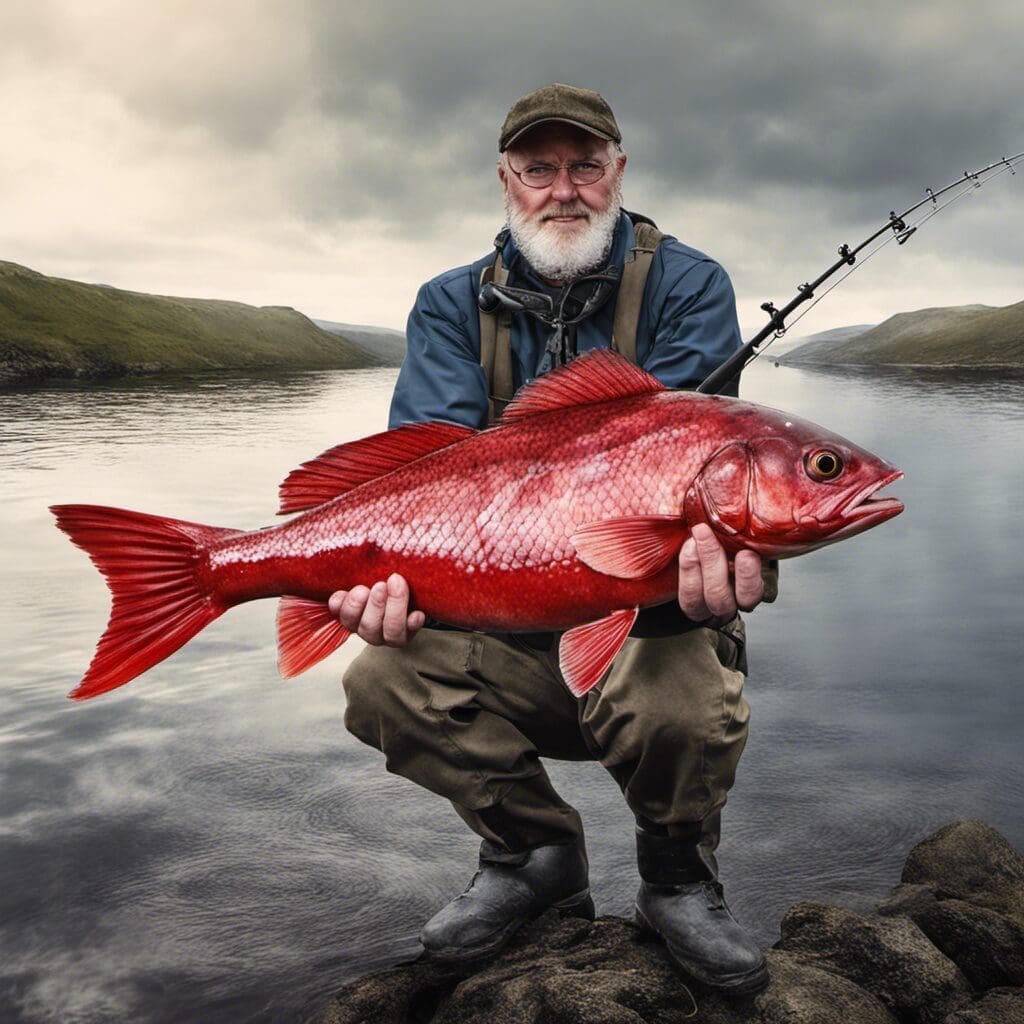Introduction
The Red Irish Lord, scientifically known as Hemilepidotus hemilepidotus, is a fascinating member of the Sculpin family, or Cottidae, distinguished by its vibrant coloration. These brainy-looking bottom dwellers are a splendid catch for any angler seeking an encounter with something a little out of the ordinary.
Conservation Status
Currently, the Red Irish Lord is not listed on any major conservation or threatened species lists. It’s received a categorization of ‘Least Concern’ as there are no immediate threats perceived to its populations.
Statistics
| Statistic | Average | Range |
|---|---|---|
| Length | 45 cm | 20 – 75 cm |
| Weight | 1 – 2 kg | 0.5 – 2.5 kg |
| Average Lifespan | 8 – 12 years | — |
Distribution
The Red Irish Lord is found in northern Pacific Ocean waters, spanning from Japan to Russia and across to Alaska and the West Coast of the United States.
Habitats
- Water Type: Saltwater, brackish
- Depth Range: 1 - 175 meters
- Temperature Range: 0 – 10 °C
When and Where to See
Red Irish Lords are most apparent during the late spring and early summer months. While they are day-active fish, dusk and dawn are the peak times to catch a glimpse of these colorful creatures.
Best Fishing Locations
- Prince William Sound, Alaska
- Kodiak Island, Alaska
- Sitka, Alaska
- Fidalgo Bay, Washington
- Lopez Island, Washington
How to Catch
The Red Irish Lord can be lured using small bait fish, shrimp, or squid. The fish respond well to bottom fishing techniques, especially during the early morning or late evening hours.
Identification Guide
Red Irish Lords are hard to miss; they sport vibrant variations of orange to red hues over their bodies and fins. They have a broad head and a stout body that ends with a relatively small tail. Their dorsal fins are long and spiny.
Culinary
Red Irish Lords are not commonly targeted for food, but they can be cooked if needed. They have a mild taste and a strong, firm texture, making them a decent choice for steak-like fish dishes.
Additional Information
Behavior
With a solitary and territorial nature, the Red Irish Lord tends to hide in patches of seaweed or nest in rocky burrows. They mainly feed on crabs, shrimp, and small fish.
Predators and Threats
Natural predators include larger fish and sea birds, while human-induced threats include habitat destruction due to coastal development.
Cultural/Historical Significance
In certain Indigenous cultures in the Pacific Northwest, the Red Irish Lord is appreciated for its bold coloration and is often depicted in local art and mythology.
References and Further Reading
To learn more about Red Irish Lords and their habits, consider visiting trusted academic and angling resources. Alas, specific recommended readings are beyond the scope of this article. Always remember to respect the ecosystems you visit, and catch-and-release enthusiastically to ensure these unique fish can be enjoyed by future generations

